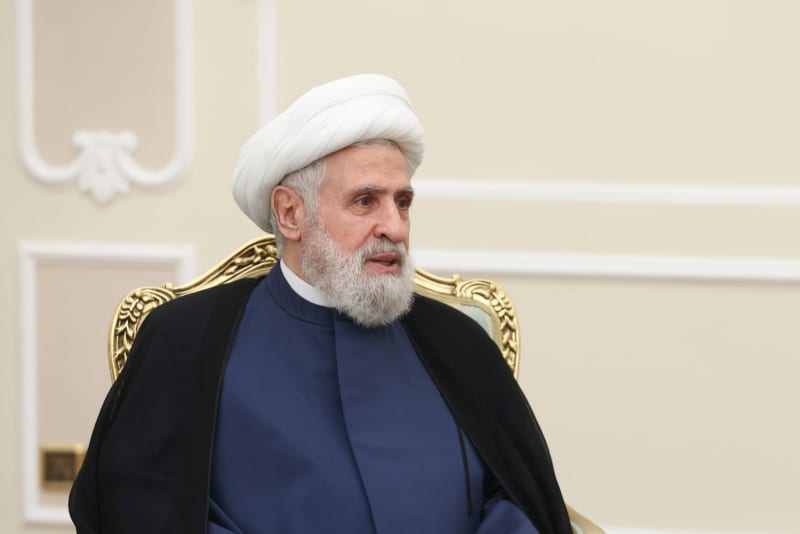Naim Qassem, the leader of Hezbollah, has expressed the group’s commitment to maintaining “high-level coordination” with the Lebanese army in the wake of a ceasefire agreement with Israel, which took effect on Wednesday. In a televised address, Qassem emphasized that this coordination is crucial for implementing the terms of the ceasefire while upholding Lebanese sovereignty. He expressed a sense of pride in the agreement, framing it within the context of self-defense, and declared that Hezbollah has achieved a significant victory in its latest conflict with Israel. Qassem’s remarks suggested that this perceived victory surpasses the one from the July 2006 war due to the battle’s length, intensity, and the sacrifices made.
In the backdrop of this ceasefire, which aims to halt the fighting that has persisted for over a year, the Israeli military conducted an airstrike targeting a mobile rocket launcher allegedly used by Hezbollah in southern Lebanon. The Israeli Defense Forces (IDF) justified this operation by declaring it a necessary measure against what they termed “terrorist activity.” This airstrike marked the third incident of Israeli military action following the ceasefire’s initiation. Simultaneously, the ceasefire agreement, which was the result of prolonged negotiations, includes provisions requiring Hezbollah to withdraw its forces behind the Litani River, roughly 30 kilometers north of the Israeli-Lebanese border, in accordance with a United Nations resolution.
Despite the cessation of large-scale reciprocal hostilities that coincided with the commencement of the ceasefire, mutual accusations of violations have continued to emerge from both Hezbollah and Israel. Tensions remain palpable as both parties navigate the complexities of adhering to the terms of the agreement, reflecting a fragile peace. Concurrently, a significant number of displaced Lebanese residents have attempted to return to their homes in southern Lebanon following the ceasefire, signaling a desire for normalcy amidst a protracted conflict.
In a related development, Israeli troops have prohibited residents from returning to dozens of villages situated near the southern border of Lebanon. An Israeli military spokesperson indicated that this decision was taken to protect civilians from potential targeting amid ongoing conflict. Over 60 villages have been identified as part of a restricted area, emphasizing the military’s cautious approach to maintaining security even as a ceasefire is in effect. Initially, there was a comprehensive restriction on access to the area south of the Litani River, although this was later lifted for most locations, indicating a gradual willingness to allow movement despite ongoing tensions.
The ceasefire agreement is designed to facilitate a phased withdrawal of Israeli ground troops from Lebanese territory over a 60-day timeline. Despite this planned withdrawal, the IDF has stated its continued operational presence in southern Lebanon, citing the need to monitor and respond to any violations of the ceasefire terms. This ongoing military vigilance underscores the fragile nature of the ceasefire and the deep-seated mistrust between the two sides. While recent hostilities may have subsided, both Hezbollah and Israel remain on alert for potential provocations and breaches of the agreement.
The situation in southern Lebanon remains complex, with thousands of displaced individuals seeking to return home and resume their lives in a post-conflict environment. The ceasefire represents a crucial step towards stability in the region, yet the numerous challenges—including military engagements, accusations, and restrictions on movement—pose significant hurdles to achieving lasting peace. As both Hezbollah and Israeli forces navigate this delicate arrangement, the international community remains watchful, hoping the ceasefire can transition from a temporary halt in fighting to a more enduring solution for the longstanding conflict in the region.

